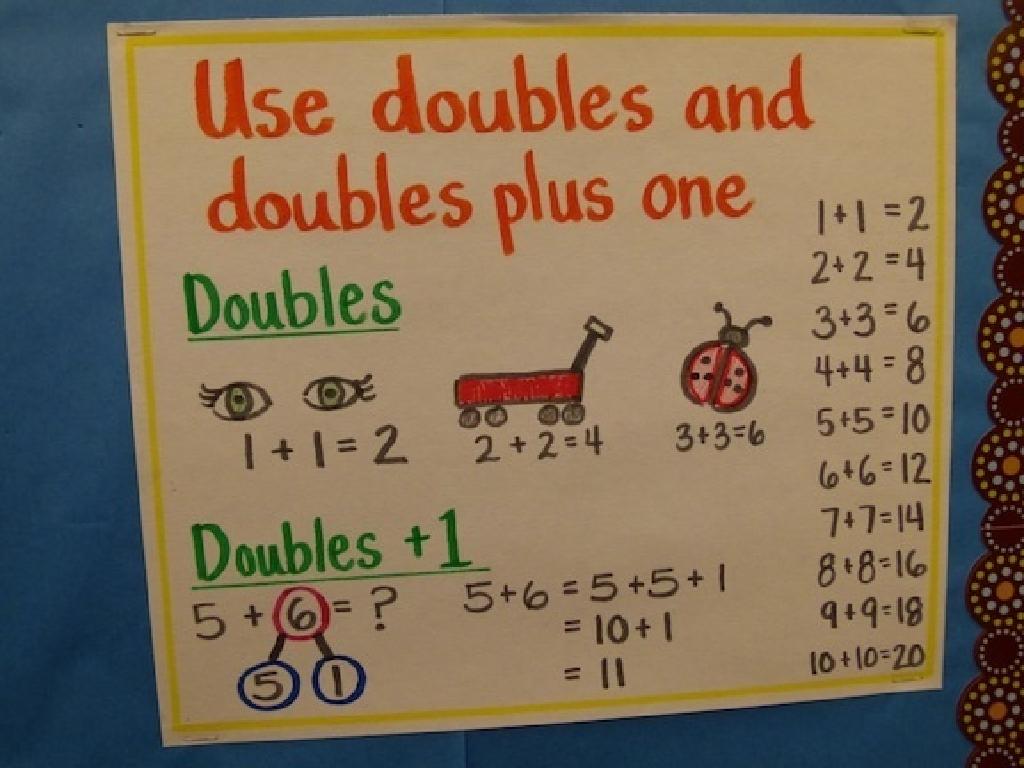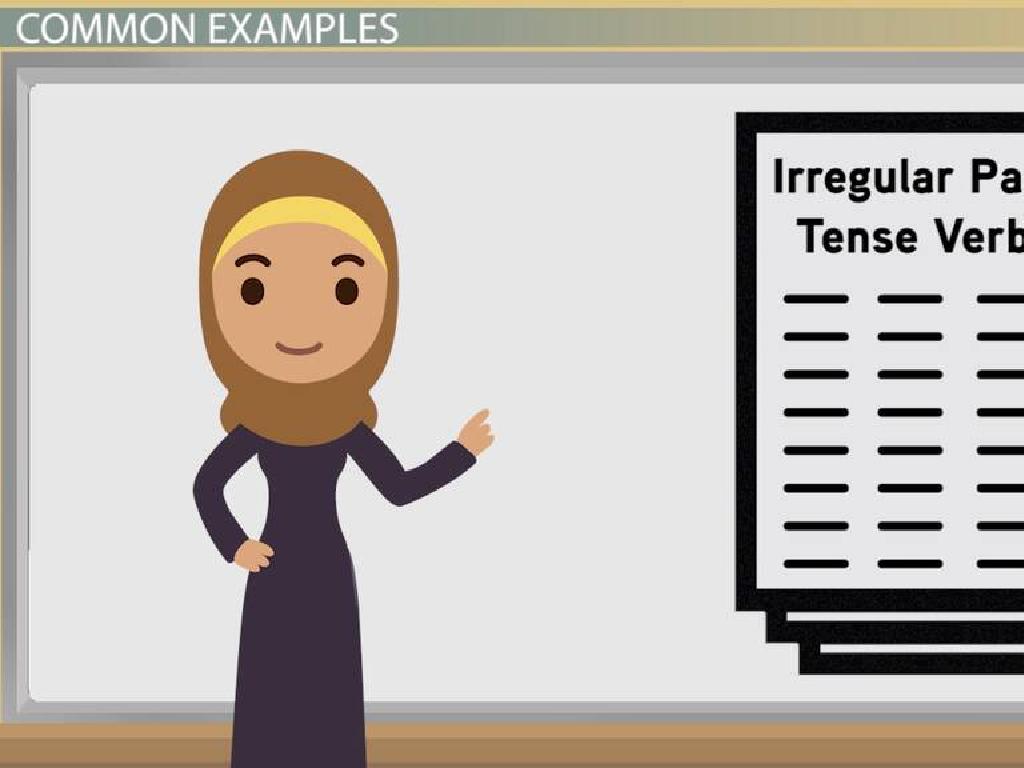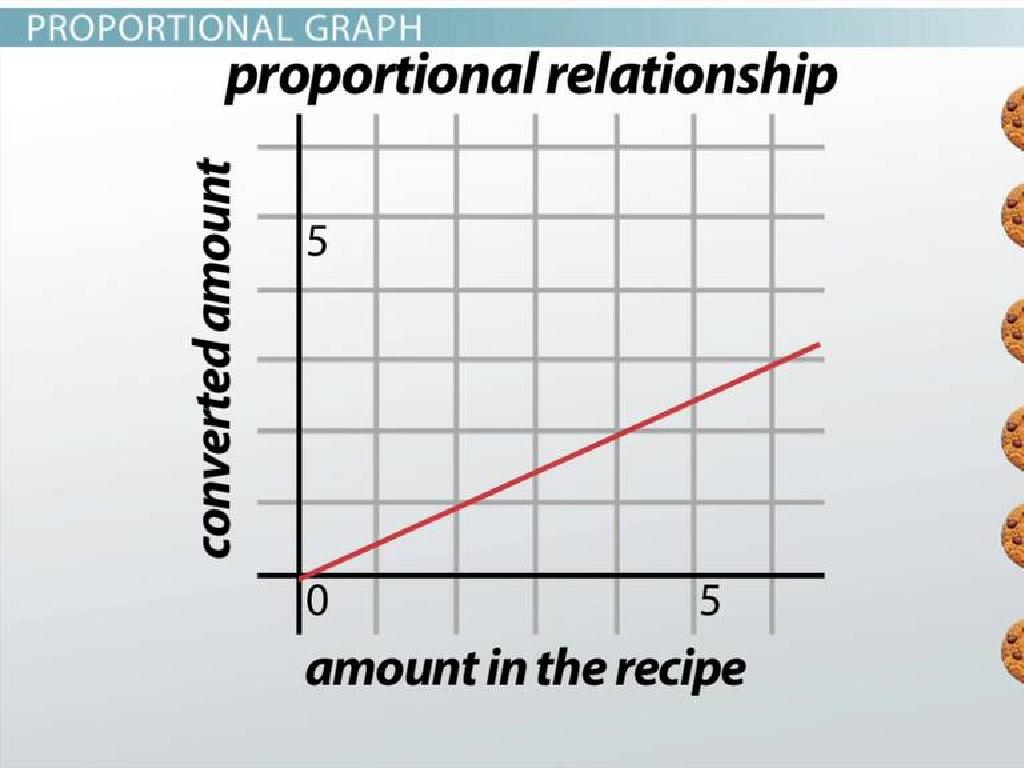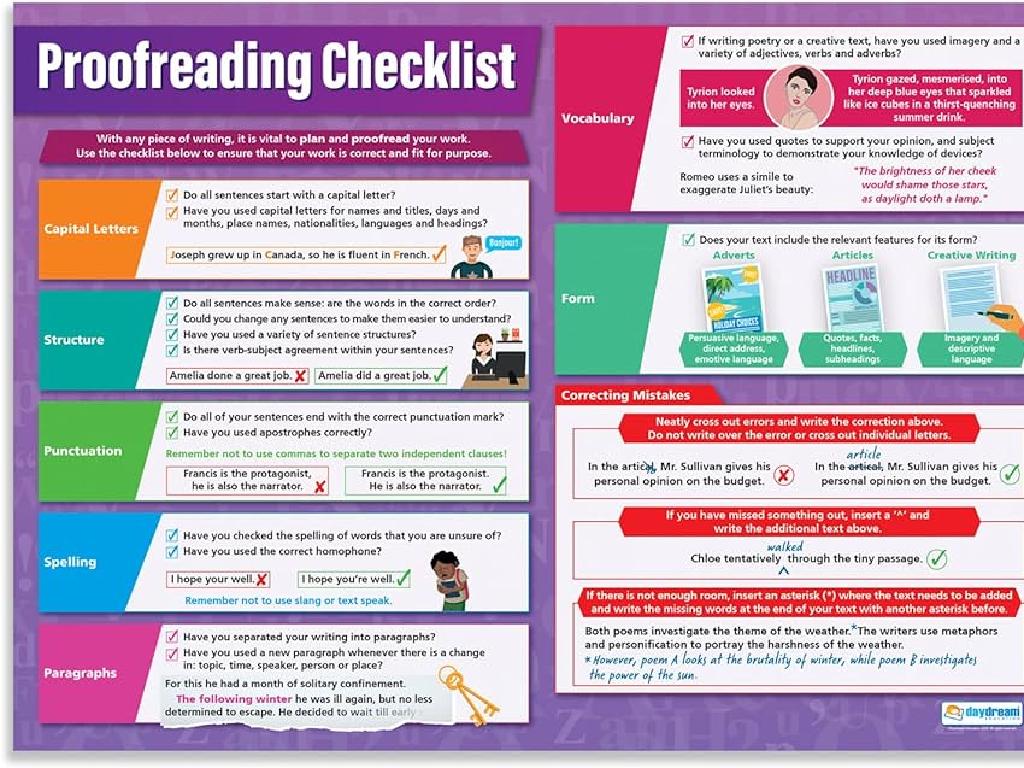Identify Elements Of Poetry
Subject: Language arts
Grade: Fourth grade
Topic: Poetry Elements
Please LOG IN to download the presentation. Access is available to registered users only.
View More Content
Exploring Poetry Elements
– Discover poetry’s beauty
– Learn poem building blocks
– Rhyme, rhythm, and structure are key
– Identify poetry elements
– Look for metaphors, similes, and personification
– Engage with poetic language
– How do poets play with words to create imagery?
|
This slide introduces students to the enchanting world of poetry, setting the stage for a deeper understanding of its fundamental components. Begin by discussing what makes poetry special and different from other forms of writing. Emphasize the importance of rhyme, rhythm, and structure as the building blocks of poems. Teach students to recognize literary devices such as metaphors, similes, and personification, which poets use to bring their writing to life. Encourage students to think about how these elements work together to create vivid imagery and evoke emotions. Activities can include identifying these elements in favorite poems or creating simple verses as a class.
Exploring the Magic of Poetry
– Poetry: a special form of writing
– It uses rhythm, rhymes to share thoughts or stories
– Expresses ideas in a unique way
– Like painting with words to create images
– Poems can be fun or serious
– Some poems make us laugh, others make us think
– Discovering what makes poetry special
– We’ll learn about rhyme, rhythm, and more!
|
This slide introduces students to the concept of poetry as a form of literature that uses structure, rhythm, and vivid language to express ideas and emotions. Explain that poetry is like an art form where words are the paint, and the structure is the canvas. Poems can evoke a wide range of emotions and can be as enjoyable as they are thought-provoking. Encourage students to think about songs they like as a form of poetry. In the following lessons, we will explore different elements that make poetry unique, such as rhyme schemes, meter, similes, and metaphors. This will set the foundation for them to start recognizing these elements in poems they read and hear.
Rhyme and Rhythm in Poetry
– Understanding rhyme in poetry
– Rhyme: words ending with similar sounds, like ‘cat’ and ‘hat’.
– Exploring rhythm: the poem’s beat
– Rhythm: the flow of the poem, sometimes fast, sometimes slow.
– Clapping hands to poem rhythms
– We’ll practice clapping to the rhythm of a poem together!
|
This slide introduces students to the concepts of rhyme and rhythm, which are key elements of poetry. Rhyme refers to the repetition of similar sounding words at the end of lines in a poem, which often creates a musical effect. Rhythm is the pattern of stressed and unstressed syllables in a poem, which can be thought of as the poem’s heartbeat. To make this interactive, we’ll practice clapping to the rhythm of a poem, helping students feel the beat and pace. This activity will not only make the learning process fun but also enhance their auditory skills and appreciation for the musicality of poetry. Encourage students to listen to different poems and pay attention to the rhyme and rhythm, and how they contribute to the overall enjoyment of the poem.
Exploring Imagery in Poetry
– Imagery paints pictures with words
– Like an artist uses paint, a poet uses words to create a vivid picture.
– It stimulates our five senses
– Think of the senses: sight, sound, taste, touch, smell in the poem’s description.
– Imagery helps us ‘see’ the poem
– Can you imagine the scene in your mind just by reading the poem?
– Let’s visualize a poem’s scene
– We’ll practice with a poem and share what scene you pictured.
|
Imagery is a key element in poetry that allows readers to create a mental image of what the poem is about. It’s important to explain to students that poets use descriptive language to appeal to our senses and evoke emotions. Provide examples of imagery from familiar settings or stories to make it relatable. Encourage students to think about how the words make them feel and what pictures they see in their minds. During the activity, have students read a poem and then draw or describe the scene it creates in their minds, focusing on how the poet uses language to appeal to the senses.
Exploring Similes and Metaphors
– Understanding similes
– Similes compare by saying something is ‘like’ or ‘as’ another
– Learning about metaphors
– Metaphors state something ‘is’ something else, directly comparing
– Similes use ‘like’ or ‘as’
– Metaphors do not use ‘like’ or ‘as’
– Example: ‘He is as brave as a lion’ uses ‘as’ to compare
|
This slide introduces students to the poetic elements of similes and metaphors, which are both used to make comparisons and add imagery to poetry. Similes explicitly use ‘like’ or ‘as’ to show similarities between two different things, making it easier for readers to visualize and understand the poet’s message. Metaphors, on the other hand, imply the comparison directly without using ‘like’ or ‘as’, often leading to more powerful imagery. The example provided, ‘The moon was a glowing lantern in the sky,’ illustrates a metaphor where the moon is being compared to a lantern, suggesting brightness and guidance. Encourage students to create their own similes and metaphors as a class activity, and discuss how these elements enhance the meaning and enjoyment of poetry.
Poetry Elements: Alliteration & Onomatopoeia
– Alliteration: Repetition of sounds
– Like ‘Peter Piper picked a peck of pickled peppers’
– Onomatopoeia: Words mimic sounds
– Words like ‘buzz’, ‘bang’, and ‘crash’
– Example of Alliteration
– ‘The slippery snake slid away’
– Example of Onomatopoeia
– ‘The bees buzzed by the barn’
|
This slide introduces students to the poetic elements of alliteration and onomatopoeia. Alliteration is the repetition of the same consonant sound at the beginning of words in a sentence or phrase, which can create a musical effect in poetry. Onomatopoeia refers to words that phonetically imitate the sound they describe, helping to bring the reader’s sensory experience to life. Use examples like ‘The slippery snake slid away’ to illustrate alliteration and ‘The bees buzzed by the barn’ for onomatopoeia. Encourage students to come up with their own examples and to listen for these elements when reading poetry.
Exploring Stanzas and Lines in Poetry
– What is a stanza in poetry?
A stanza is like a paragraph, a section of a poem grouped together.
– Lines: Building blocks of stanzas
Lines are single rows of words that make up a stanza.
– Observing stanza arrangement
Look at how stanzas and lines are organized to form a poem’s structure.
– Poem structure activity
|
This slide introduces students to the fundamental structure of poetry, focusing on stanzas and lines. A stanza in poetry is compared to a paragraph in prose, serving as a way to group lines together. Each line is a building block of the stanza, and the way these lines are arranged can affect the rhythm, flow, and overall impact of the poem. Use a familiar poem as an example to illustrate how stanzas and lines are used. For the activity, have students identify stanzas and lines in the poem and discuss how the arrangement contributes to the poem’s meaning. Encourage them to notice patterns and ask if the structure creates a beat or emphasizes certain words or ideas.
Class Activity: Create Your Own Poem!
– Become a poet today
– Pick a classroom object
– Write a four-line poem
– Include elements like rhyme, rhythm, or metaphor
– Share with the class
|
This activity is designed to allow students to apply their knowledge of poetry elements creatively. Encourage them to look around the classroom and choose any object as their subject. They should write a short poem, aiming to incorporate at least one of the poetic elements discussed in class, such as rhyme, rhythm, alliteration, or metaphor. After writing, students will have the opportunity to share their poems with the class. This sharing will not only celebrate their creativity but also help reinforce their understanding of poetry elements. As a teacher, be prepared to offer positive feedback and gentle guidance to improve their poetic expressions. Possible activities for different students could include writing acrostic poems, creating a haiku, or composing a couplet.






